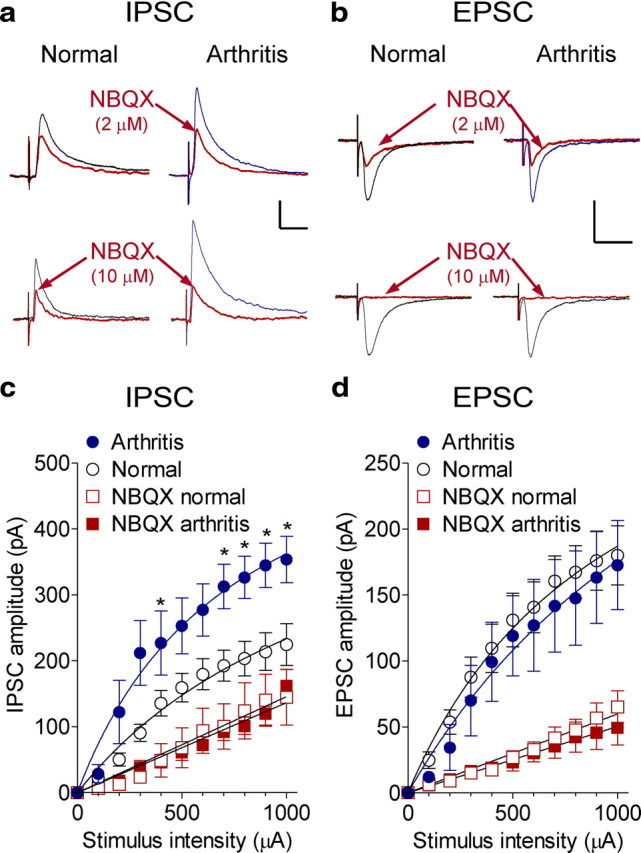Figure 7.

Increased synaptic inhibition of PFC neurons in arthritis pain model. Whole-cell voltage-clamp recordings of visually identified prelimbic layer V pyramidal cells as in Figure 6. a, Evoked IPSCs (recorded at 0 mV) increased in arthritis and were decreased by NBQX (2 and 10 μm). b, Evoked EPSCs (recorded at −70 mV) were inhibited by NBQX (2 and 10 μm) in control slices and in slices from arthritic rats (6 h after induction). Calibration: 100 pA, 50 ms. Individual traces are averages of 8–10 IPSCs. c, Input–output functions of IPSCs increased in slices from arthritic rats (5–6 h after induction; n = 7 neurons) compared with normal controls (n = 17 neurons) significantly (two-way ANOVA, F(1,242) = 55.16, p < 0.0001). NBQX (2 μm) significantly decreased IPSCs in control slices (n = 7 neurons; two-way ANOVA, F(1,242) = 32.98, p < 0.0001) and in slices from arthritic rats (n = 5 neurons; two-way ANOVA, F(1,110) = 129.91, p < 0.0001). d, Input–output functions of evoked EPSCs in slices from arthritic rats (n = 9 neurons) and from normal controls (n = 21 neurons) were not significantly different (two-way ANOVA, F(1,308) = 1.84, p > 0.05). NBQX (2 μm) had significant inhibitory effects under normal conditions (n = 6 neurons; two-way ANOVA, F(1,275) = 70.69, p < 0.0001) and in arthritis (n = 6 neurons; two-way ANOVA, F(1,143) = 46.25, p < 0.0001). *p < 0.05 (compared with normal; Bonferroni's post hoc test).
